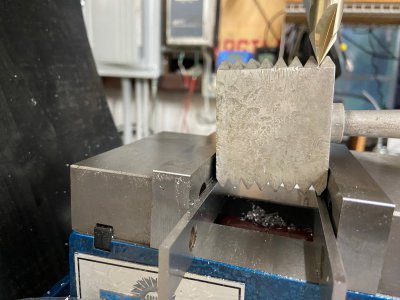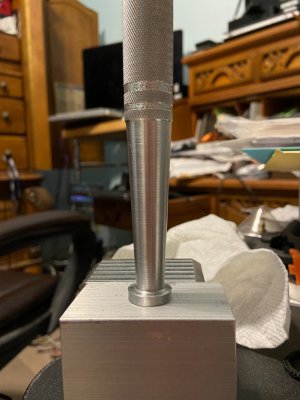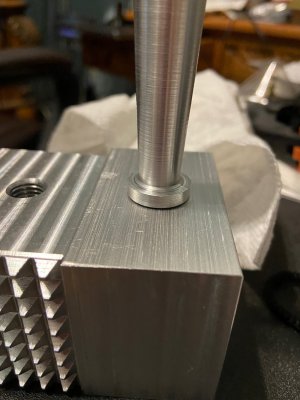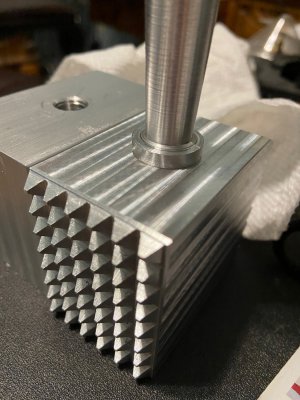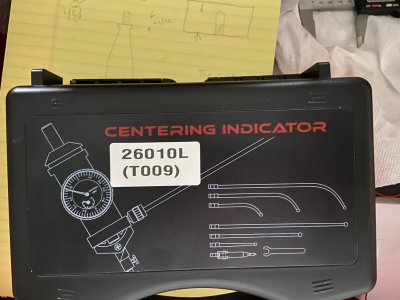As many may recall my project is to recreate a meat mallet that I made in high school. This was to be a re-learning project to reacquaint me with machining and operating a home machine shop.
I bought a 7X14 mini-lathe and successfully made a couple of handles. Working with a 3/4" aluminum rod gave me a chance to become familiar with the lathe as I turned, threaded, tapered, and knurled the mallet handles.
I bought a PM-728VT mill, and then I made a meat hammerhead and that turned out well. With Christmas four months away I decided the next step would be to produce about seven more meat mallets. The first took about 30 hours of learning with about 20 hours of machining. I am hoping to reduce the time invested to about five hours of machining, each. Along the way, I ordered a TM-1236 lathe which should make short work of the meat mallet handles.
I added the table power feed and plan to add a power feed to the column to make changing bits easier. I have however run into a problem. Drilling and tapping the mallet head seemed perfect for the first one. Centered and perpendicular to the head. The handle looked like it was machined after screwing it into the mallet head (-

. However, I have not been able to duplicate that precision during the subsequent production. None of the subsequent drilled and taped holes are precise. The handles tilt. I feel I could have done better with a hand drill.
I used the center indicator to check the alignment of the mill, ensuring the vise is square and the column moves precisely vertically as it is raised and lowered, ensuring it is square to the table. I used a square mounted in the vise to give me about four inches of vertical to measure. I am about 0.002 over four inches on all axis. The error continues to be a puzzle. The first head came out perfect. However, all the rest (seven in all plus about four tests and tapped holes) did not.
One mistake I may have made is drilling centering holes. I did seven mallet head blanks one after the other. This means after drilling the centering hole, I unclamped the piece and drilled the next. I worry that the centering holes actually serve to guide the tape drill to one side or another disturbing the precision. But I did a few tests where I drilled the centering hole, and replaced the centering bit with the tap drill, but ended with a similar error.
Again all suggestions are greatly appreciated.

 I found a crab mallet the other day I made back in jr. high school way back when . Crude to say the least , but I guess it would still crack a crab . ( if I could afford them these days )
I found a crab mallet the other day I made back in jr. high school way back when . Crude to say the least , but I guess it would still crack a crab . ( if I could afford them these days )

